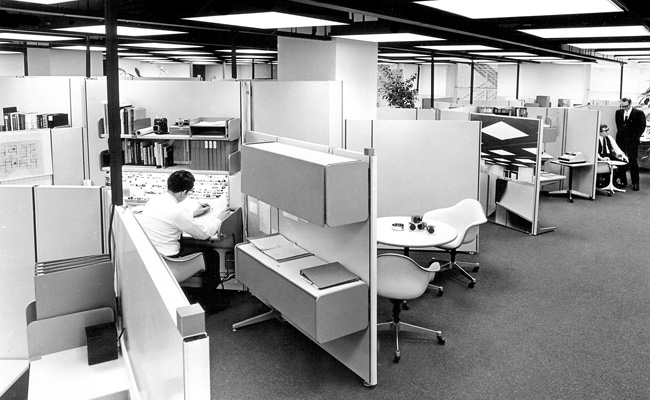
In 1967, designer Robert Propst for Herman Miller had a new vision for the office space. Calling it the Action Office II, the partially enclosed environment offered greater privacy and productivity for the modern office worker. These days, we call this revolutionary furniture piece … The Cubicle.
In the early 1960s, with 120 patents on designs and systems under his belt, Propst became fascinated with improving the modern workplace.
“Today’s office is a wasteland. It saps vitality, blocks talent, frustrates accomplishment. It is the daily scene of unfulfilled intentions and failed effort.” Robert Propst, 1960
Inspired by European designs and concepts of office privacy screens, Propst wanted to create a productive yet comfortable environment that would nurture creativity through personalization.
When the Action Office II was released, the cubicle’s mobile walls allowed businesses to modify their space based on the needs of its employees. Additionally, as a business grew in size, the cubicle walls could be modified to accommodate the additional workers.
In Propst’s new system, plenty of work space and shelves were given to employees. The system had the ability to change the height of the attached desks, allowing employees to work while standing up (echoing the current trend of standing desks).
By the 1970s the cubicle had become a mainstay of the office landscape. In 1978, the Action Office II was rechristened to just Action Office. Today, the Action Office system is still carried by the Herman Miller brand. Still durable and still flexible, today’s Action Office system combines the best of Propst’s original ideas and designs, with the demands and trends of today’s workplace.





